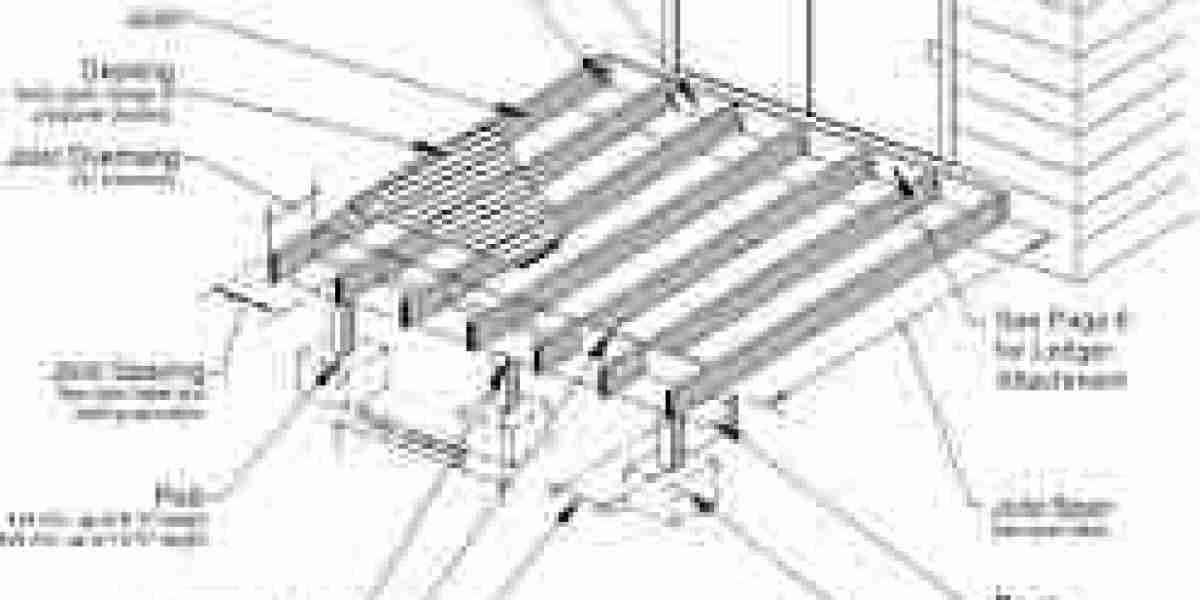In this article, we’ll explore the role of deck beam span charts in deck building, how to interpret them, and why they’re essential for creating a safe, durable, and visually appealing structure.
What Is a Deck Beam Span Chart?
A deck beam span chart is a table that provides guidelines for determining the maximum distance a beam can span between two support posts without losing its integrity. Factors influencing the span include:
- Beam size: Larger beams can span longer distances.
- Number of plies: Double or triple-ply beams are stronger than single-ply ones.
- Material type: Wood species and engineered wood differ in strength and durability.
- Load requirements: Dead load (deck structure) and live load (furniture, people) must be considered.
By referencing a span chart, builders ensure that beams meet structural requirements and provide long-lasting support.
Why Is a Deck Beam Span Chart Important?
1. Safety Assurance
The right beam span ensures your deck can withstand weight and weather without sagging or collapsing.
2. Compliance with Building Codes
Most local regulations specify span limits to ensure structural integrity. A span chart helps you adhere to these rules.
3. Cost Efficiency
Using the right beam size prevents overspending on oversized materials or the risks of undersized beams.
4. Enhanced Longevity
Properly spaced beams reduce stress on the deck, preventing wear and tear over time.
Decoding the Deck Beam Span Chart
A deck beam span chart might look complex at first, but it’s straightforward once you understand its components:
Key Components
Beam Size
Common beam sizes range from 2x6 to 2x12. Larger beams allow longer spans.Number of Plies
Beams made of two or three layers (plies) are stronger and more suitable for larger spans.Joist Span
The distance between the joists impacts the load carried by the beam.Load Specifications
- Dead Load: The weight of the deck’s materials (typically 10 pounds per square foot).
- Live Load: The weight of additional elements like furniture, people, or planters (usually 40 pounds per square foot).
Sample Span Chart
| Beam Size | Number of Plies | Joist Span (in feet) | Maximum Beam Span (in feet) |
|---|---|---|---|
| 2x6 | Double | 6 | 8' |
| 2x8 | Triple | 8 | 11' |
| 2x10 | Double | 10 | 14' |
| 2x12 | Triple | 12 | 18' |
How to Use a Deck Beam Span Chart
Measure Your Deck Area
Determine the overall size of your deck, including the spacing of posts, beams, and joists.Choose the Beam Material
Select durable materials such as pressure-treated wood, cedar, or engineered lumber like LVL or Glulam.Identify the Load Requirements
Account for additional features, such as a hot tub or outdoor kitchen, that may add extra weight.Match Your Specifications to the Chart
Find the intersection of your beam size, ply count, and joist span in the chart to determine the maximum allowable beam span.Make Adjustments if Needed
If your planned span exceeds the chart’s recommendations, consider:- Increasing the beam size.
- Adding more support posts.
- Shortening the joist span.
Modern Alternatives: The Rise of Engineered Beams
While traditional wood beams remain popular, engineered options like Laminated Veneer Lumber (LVL) and Glulam are becoming the go-to choice for modern deck builders. Here’s why:
- Increased Strength: Engineered beams can handle longer spans with fewer supports.
- Resistance to Warping: They are less likely to deform over time.
- Eco-Friendly Options: Many engineered beams use sustainable materials.
Tips for Perfect Beam Spanning
Plan for the Future
If you intend to add features like a pergola, hot tub, or heavy furniture, use beams with a higher load capacity.Use Intermediate Supports
For larger decks, install additional posts to reduce beam spans and improve stability.Focus on Proper Fastening
Secure beams with high-quality galvanized or stainless-steel fasteners to prevent corrosion.Double-Check with Local Codes
Building codes vary by location, so always ensure your design complies with regional requirements.
Avoiding Common Mistakes
Underestimating the Load
Not accounting for future uses or gatherings can lead to unsafe spans.Ignoring Environmental Factors
Snow, wind, and moisture can significantly impact beam performance.Improper Beam Installation
Beams should always be level, securely fastened, and supported by well-placed footings.Skipping Maintenance
Regular inspections can catch potential issues like rot, cracks, or fastener corrosion early.
Conclusion
A deck beam span chart is more than a guideline—it’s the foundation of safe and durable deck construction. By understanding its principles and applying them effectively, you can design a deck that stands strong for years to come.
Whether you’re crafting a small patio or a sprawling outdoor entertainment area, let the span chart be your trusted companion. Combine its insights with quality materials and thoughtful design for a deck that balances beauty and resilience.
Start your deck project today, and let the deck beam span chart guide you toward a safe, stylish, and enduring outdoor haven!




